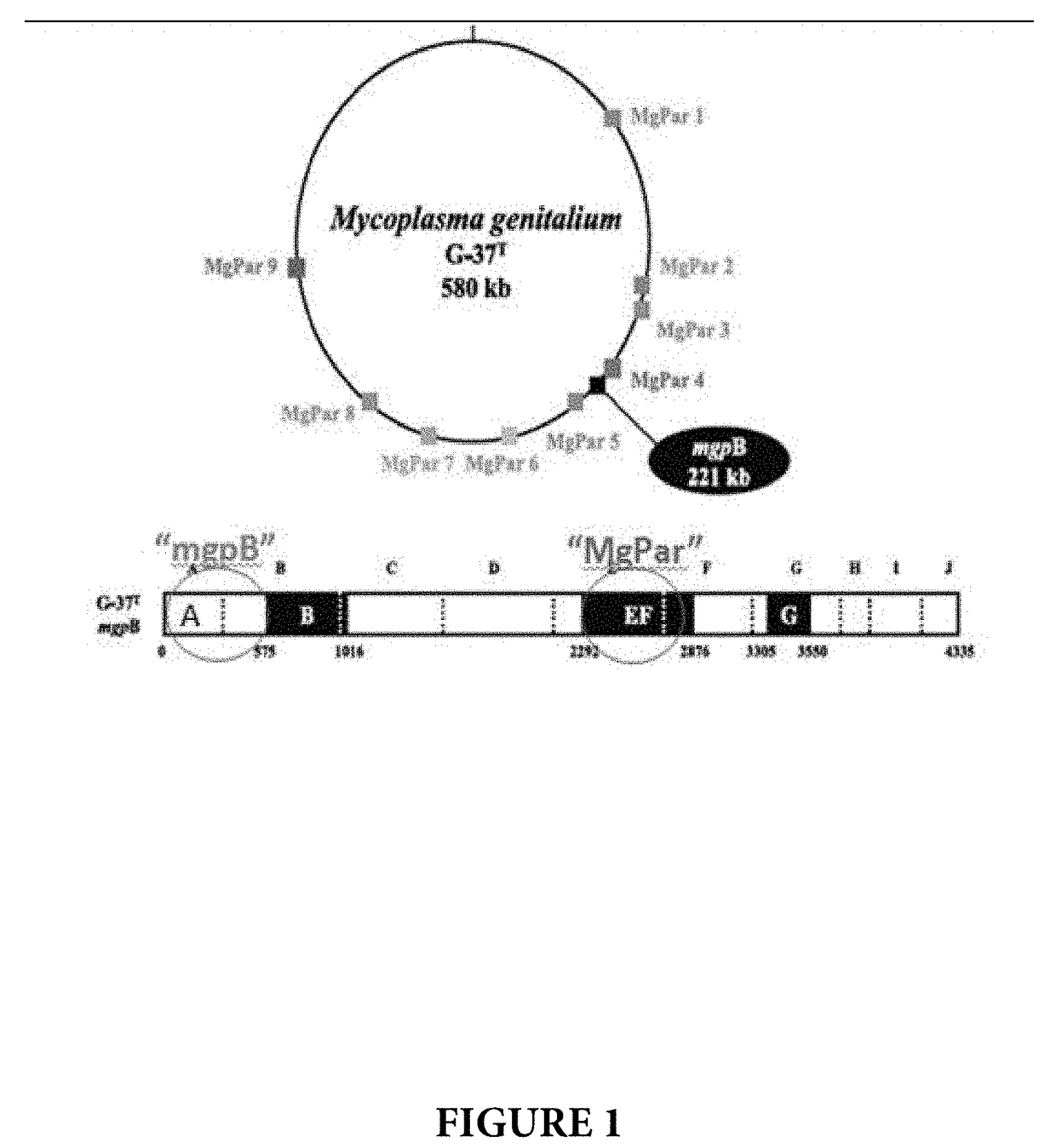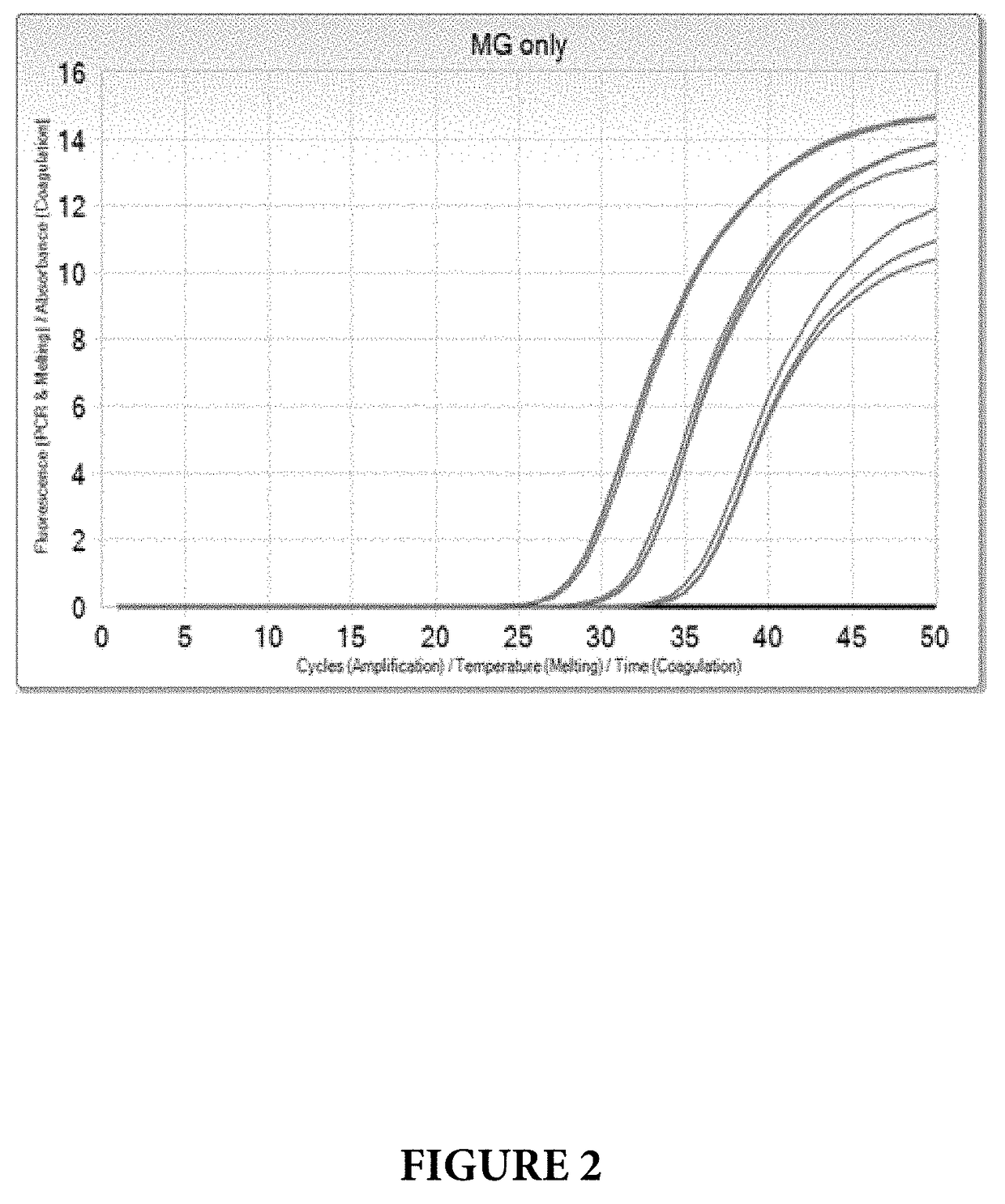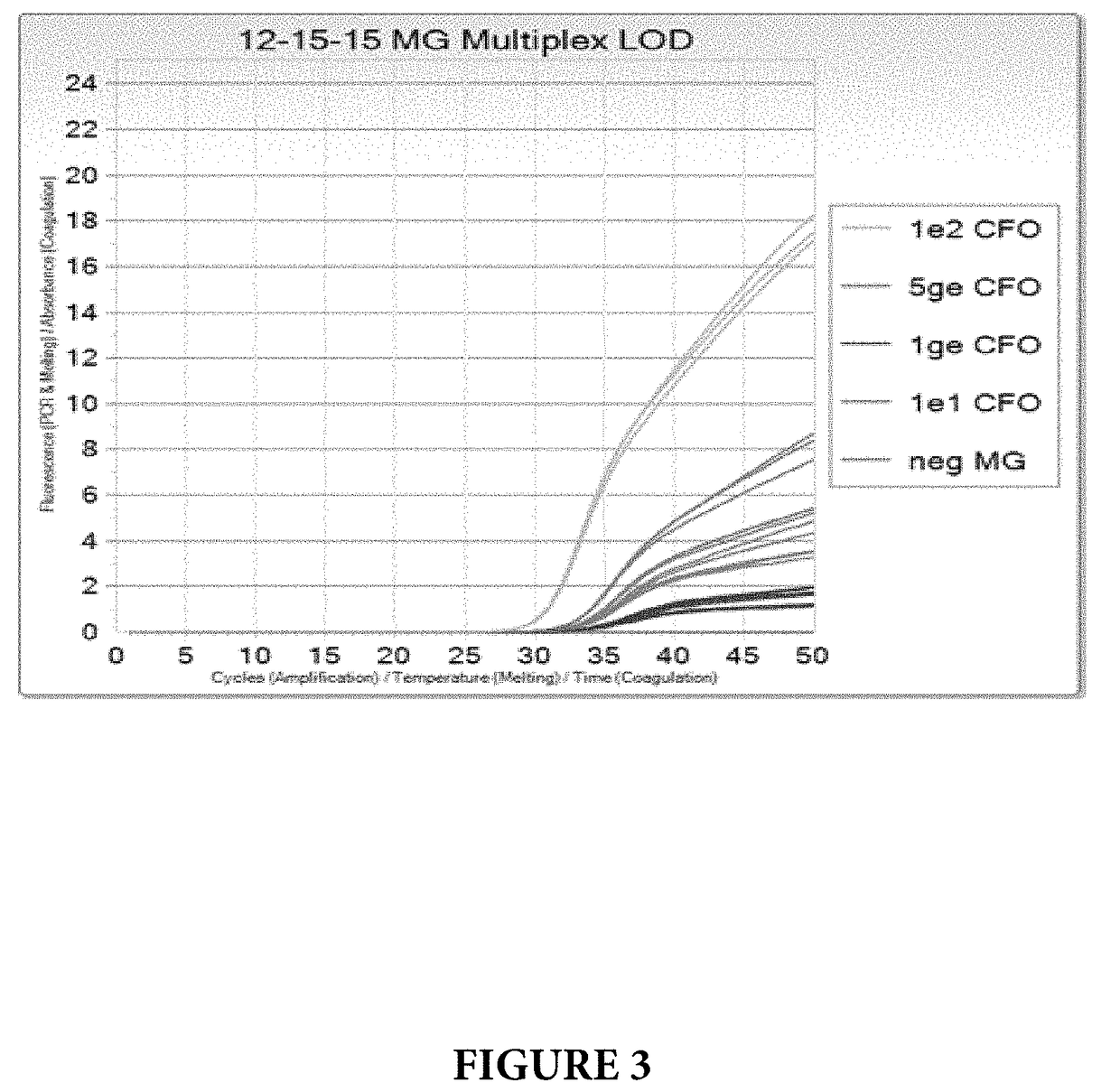Compositions and methods for detection of mycoplasma genitalium
a technology of mycoplasma and genitalium, applied in the field of molecular diagnostics, can solve the problems of inability to readily collect culture samples, inability to detect mycoplasma genitalium, and inability to easily collect culture samples,
- Summary
- Abstract
- Description
- Claims
- Application Information
AI Technical Summary
Benefits of technology
Problems solved by technology
Method used
Image
Examples
example 1
[0091]Target selection for MG was the result of a comprehensive search of the public sequence database. Multiple methods were used to search for Mycoplasma genitalium sequences and its nearest neighbor, Mycoplasma pneumoniae, to design for assay exclusivity. The MG targets selected had the most coverage in the public database (mgpB 120 sequences, MgPar 5 whole genome assemblies). MG has a small compact genome, which limited regions to target for NAT design. The mgpB surface protein gene (called the MgPar target) was selected for the assay due to its multi-copy number. Surface proteins are known to undergo recombination, which can result in a failed assay. To mitigate the associated risks, a dual target approach was implemented using a well conserved target (called the mgpB target).
[0092]The MgPa operon codes three genes: mgpA, mgpB and mgpC (black circle labeled as mgpB 221 kb in FIG. 1). mgpB (4335 bp) is present in the complete operon but there are nine partial repeats (MgPar's) o...
example 2
[0096]The amplification and detection of the MG mgpB and the MG MgPar genes was performed as described in Example 1 with the exception that genomic template DNA for Trichomonas vaginalis (TV) was included in the PCR assay together with primers and probes that can amplify and detect TV. In this experiment, primers and probes, disclosed in U.S. Provisional Application No. 62 / 342,600, that hybridize to the 5.8s rRNA gene were used.
[0097]MG Limit of Detection (LOD) was tested at 100, 10, 5 and 1 genomic equivalent concentrations per PCR reaction (ge / PCR), in a co-amplification with internal control standard and TV at 10 ge / PCR. The results are shown on FIGS. 3 and 4. All levels of MG were detected with no dropouts, and MG LOD was determined to be <1 ge / PCR.
[0098]While the foregoing invention has been described in some detail for purposes of clarity and understanding, it will be clear to one skilled in the art from a reading of this disclosure that various changes in form and detail can ...
PUM
| Property | Measurement | Unit |
|---|---|---|
| temperature | aaaaa | aaaaa |
| temperature | aaaaa | aaaaa |
| temperature | aaaaa | aaaaa |
Abstract
Description
Claims
Application Information
 Login to View More
Login to View More - R&D
- Intellectual Property
- Life Sciences
- Materials
- Tech Scout
- Unparalleled Data Quality
- Higher Quality Content
- 60% Fewer Hallucinations
Browse by: Latest US Patents, China's latest patents, Technical Efficacy Thesaurus, Application Domain, Technology Topic, Popular Technical Reports.
© 2025 PatSnap. All rights reserved.Legal|Privacy policy|Modern Slavery Act Transparency Statement|Sitemap|About US| Contact US: help@patsnap.com



